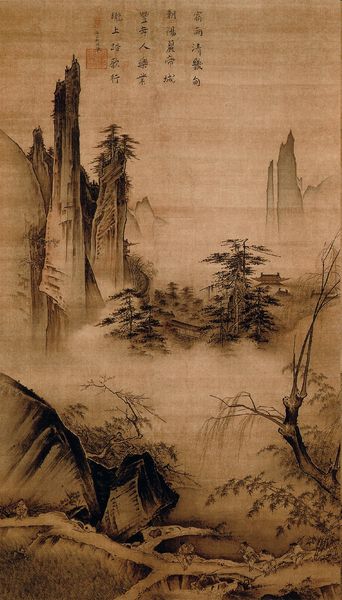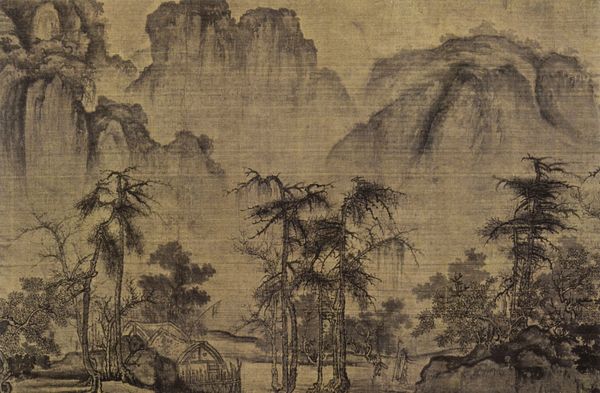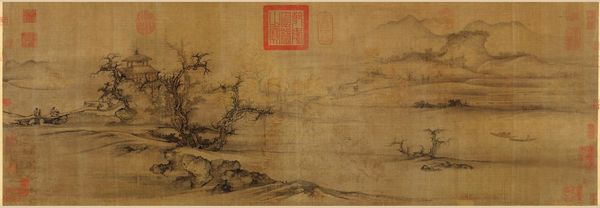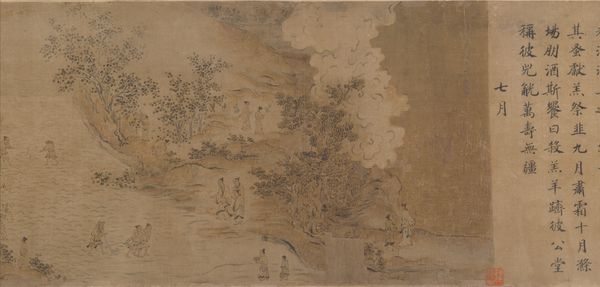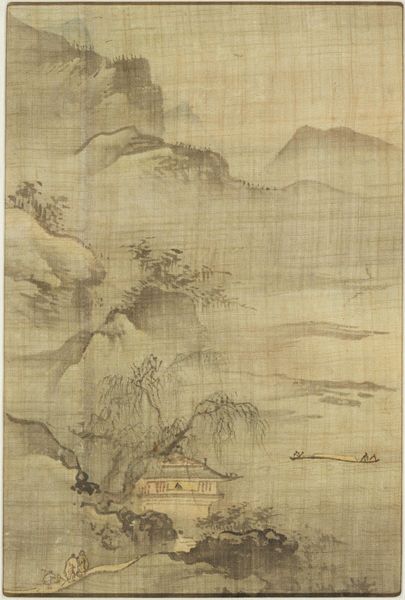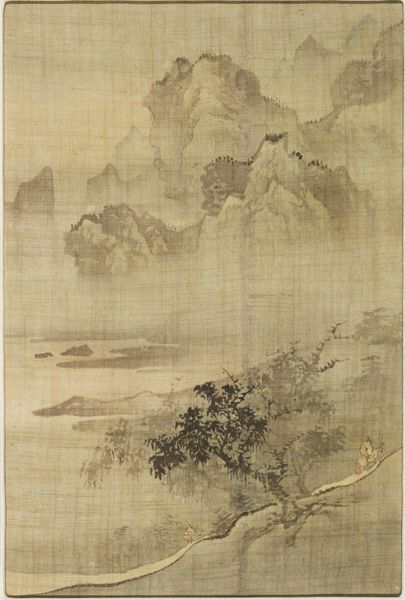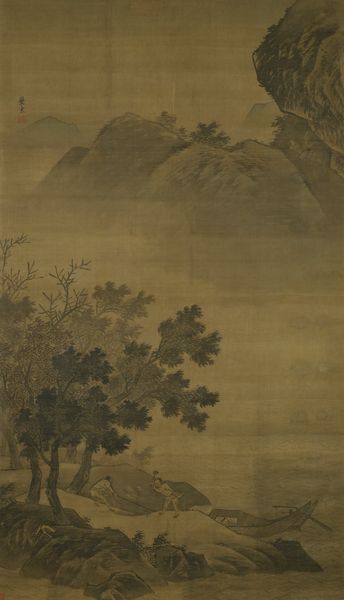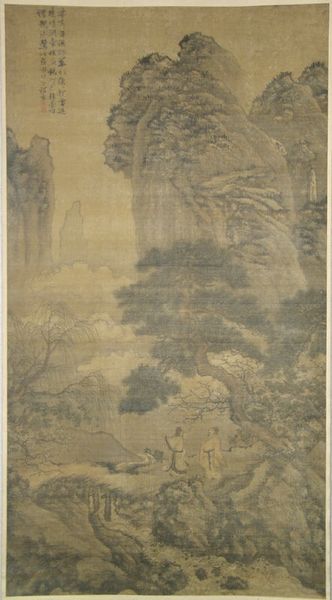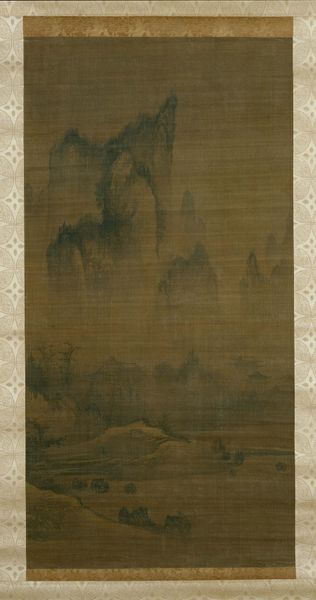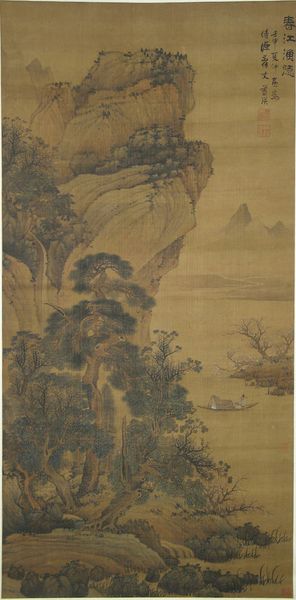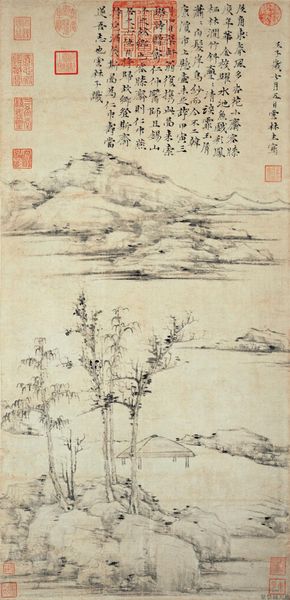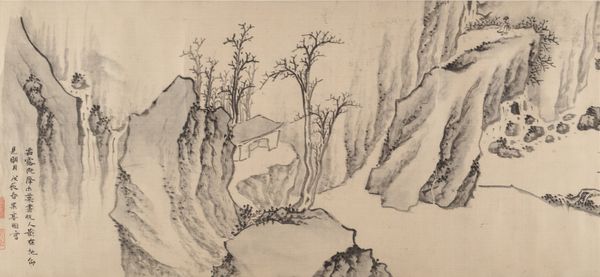
painting, paper, ink
#
medieval
#
painting
#
asian-art
#
landscape
#
charcoal drawing
#
paper
#
ink
#
northern-renaissance
#
charcoal
#
watercolor
Copyright: Public domain
Curator: Guo Xi’s "Clearing Autumn Skies over Mountains and Valleys," dating back to 1072, offers a window into the artistic landscape of the Song Dynasty. Executed in ink on paper, it showcases a panoramic vista. Editor: The monochrome palette initially evokes a feeling of serene desolation. The towering forms create a visual hierarchy that almost feels... patriarchal? Is that reaching? Curator: Not at all. Considering the context of Neo-Confucianism's rise during that period, the patriarchal structures it reinforced undoubtedly seeped into the cultural representations, including landscape painting. The mountains, often seen as masculine symbols of stability and power, dominate the scene. The delicate rendering of valleys below as feminine aspects offer some insight, if read critically, into gendered perceptions prevalent then. Editor: Interesting! I was also struck by the mist. Its use adds an almost mystical quality. I see it repeated through Chinese painting, with mountains always enshrouded. Curator: Precisely. In Chinese cosmology, mist serves as a potent symbol representing transformation and transition. It blurs the boundaries between the earthly and the divine, connecting disparate realms. Note how the placement and density of the ink washes around and through the various elements further contributes to a kind of dreamscape, drawing the viewer inward. Editor: It's about creating visual harmony... balancing what is literally shown with what’s inferred, almost like emotional weather patterns that resonate across centuries. The painting serves as a vessel carrying specific intentions that extend beyond simply a landscape study. Curator: Agreed. Moreover, remember this artwork transcends purely aesthetic representation; it encapsulates sociopolitical and cultural ideologies which must be carefully decoded through critical discourse with feminist perspectives in mind. Editor: I come away seeing it’s not just looking at mountains, trees and water, it’s deciphering a cultural archive expressed through form and ink.
Comments
No comments
Be the first to comment and join the conversation on the ultimate creative platform.
